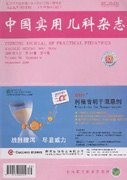Pneumonia is the leading cause of death among children worldwide,and the highest reason of morbidity and hospitalization in children. Bacterial pneumonia in children has brought heavy burden and harm,so clinicians should try to seek pathogenic microorganism,evaluate the severity and complication in time,choose safe and effective antibiotics reasonably and pay much attention to comprehensive treatment in order to improve the success rate of treatment. Clinicians should learn knowledge related to vaccine prevention and improve the level of scientific use of vaccines.

